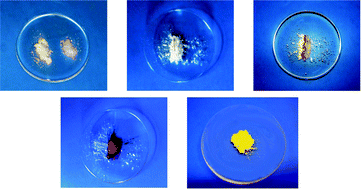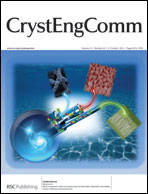Mechanism of the solvent-free reactions between indole derivatives and 4-nitrobenzaldehyde studied by solid-state NMR and DFT calculations†
Abstract
In an effort to determine the details of the solid-state reaction mechanism of the Friedel–Crafts hydroxyalkylation between indole derivatives (indole, 1A, and N-methylindole, 1B) and an aromatic aldehyde (4-nitrobenzaldehyde), a series of solid-state NMR experiments have been performed. The reaction proceeds through a melted phase. By means of the DE pulse sequence the hydroxylic intermediate species (1H-indol-3-yl)(4-nitrophenyl)methanol (3A) and (1-methyl-1H-indol-3-yl)(4-nitrophenyl)methanol (3B) in the melt could be observed and characterized, providing evidence for elucidating the reaction mechanism. To support the experimental results, DFT calculations have been carried out showing that the first step of the reaction involving indole and nitrobenzaldehyde to give the intermediate 3A is energetically favored by 24.7 kJ mol−1, whereas the final product 3,3′-((4-nitrophenyl)methylene)bis(3a,7a-dihydro-1H-indole) (


 Please wait while we load your content...
Please wait while we load your content...